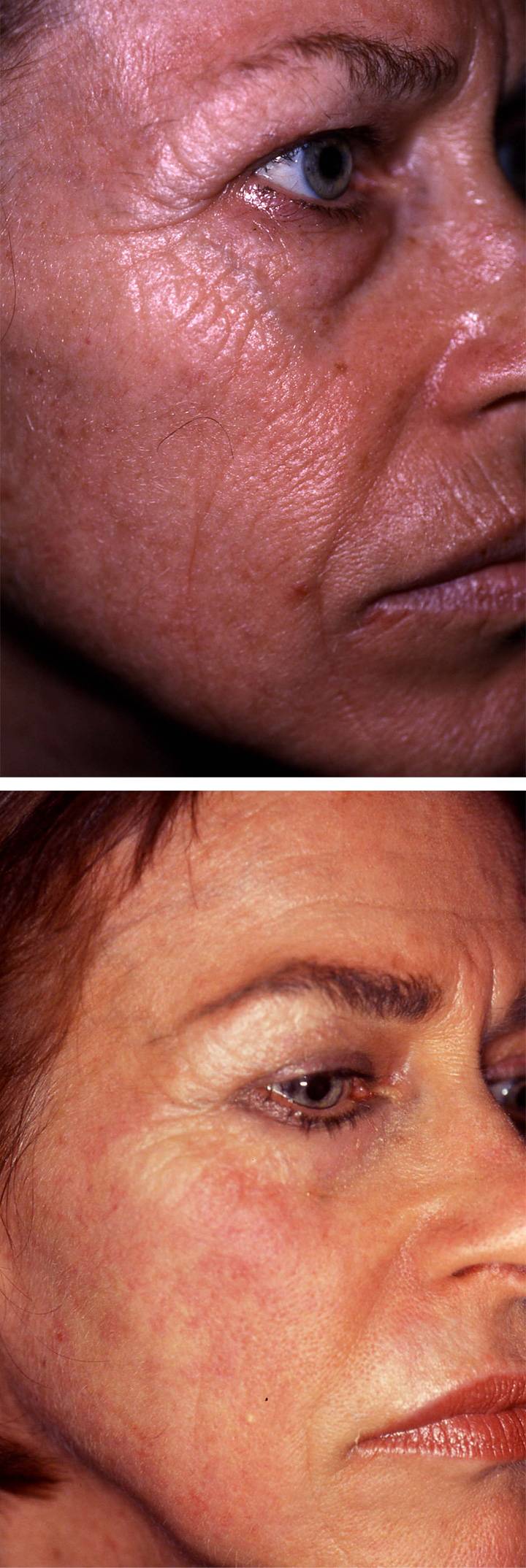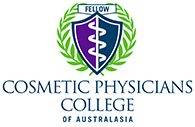Laser Skin Resurfacing Sydney NSW
At Áda Aesthetic Medicine we provide a range of laser skin resurfacing procedures, ranging from mild refreshing non-ablative fractional procedures, stronger ablative fractional CO2 laser treatments through to the even stronger traditional CO2 & Erbium laser resurfacing procedures.
The type of laser used will depend on the severity of the skin damage, and also whether patients are able to take time off for healing.
Traditional CO2 & Erbium Laser Skin Resurfacing
For over 20 years the Carbon Dioxide (CO2) laser, then also later the Erbium laser, have been used to treat various skin problems.
What sort of skin problems does resurfacing treat?
Laser resurfacing is good for fine lines and coarse wrinkles, scars, uneven pigmentation and sun-damaged skin.
How does traditional laser resurfacing work?
The laser light is absorbed into the skin and converted to heat that then vaporises the skin tissue, removing (or ‘ablating’) the skin’s outer surface layers. Below the vaporised skin layer new collagen growth is stimulated, leading to re-growth of new skin that will have better texture, tightness and more even colour. The early CO2 lasers treated 100% of the treatment area.
Is traditional laser resurfacing painful?
Yes, so all the treatments are performed using local anaesthesia.
How long is recovery after laser resurfacing?
There is a 7-14 day recovery period, after which patients may return to work. The new skin will be pink/red, which gradually fades over several weeks to months. This pinkness is an indication of the deeper skin healing and new collagen being produced.
When will I see results from laser resurfacing?
The collagen remodelling and synthesis process continues for some months after treatment. Usually after 3-6 months you can expect to see best results.
What is the ‘gold standard’ for laser resurfacing?
The CO2 laser is still considered the gold standard in laser skin resurfacing. However, due to its more prolonged healing times, new fractional laser skin resurfacing has been developed to reduce downtime and potential side effects.
Fractional CO2 Laser Skin Resurfacing
Fraxel was the first laser company to market the fractional laser. The first Fraxel was non-ablative 1550nm wavelength with the carbon dioxide (CO2) added later to achieve quicker and better resurfacing results. Now there are several laser companies that produce fractional lasers such as the Mixto fractional CO2 laser.
How is fractional laser different to traditional laser?
Fractional CO2 lasers are modified CO2 lasers which allow the treatment of smaller zones or ‘micro-spots’, treating 10, 15, 20 or 40% of the skin surface in the treatment area, rather than the whole (100%) of the skin area.
Between these micro spots the skin is relatively undamaged. This helps with faster healing and less risk of side effects.
What are the main advantages of fractional lasers?
The advantage of fractional lasers is that areas of ‘normal skin’ are left in between the laser-treated zones, which allows rapid healing and fewer side effects. Hence, fractional CO2 laser combines the proven benefits of CO2 lasers with ‘micro-spot’ (fractional) technology.
What can fractional CO2 laser treat?
It is suitable to treat lines, wrinkles, coarse texture, open pores, sun damaged skin, scars and acne scars on the face but also on the chest and hands.
How many treatments are needed with fractional CO2 laser?
One of the benefits of CO2 fractional laser is that results can be seen after just one treatment. More severe lines, scarring or sun damaged skin will benefit from a second or even a third treatment.
Is fractional CO2 laser painful?
Yes, but numbing cream alone may be sufficient for many treatments. Local anaesthetic nerve injections will be needed for higher energy treatments.
How much down time is needed?
The recovery time depends on the settings used, but may be as short as 4 days for light energy settings. A higher energy treatment could need at least 7 days for healing.
Is everyone suitable for Fractional CO2 laser?
Fractional CO2 laser may not be appropriate for everyone. Contraindications to treatment include: abnormal healing e.g. keloids, Roaccutane within the last 12months, pregnancy, immune suppression (HIV, transplant patients), darker skin (which has an increased risk of discolouration & scarring) and whether you’ve had full laser resurfacing in the last 6 months.
Non-Ablative 1540nm Fractional Laser Skin Resurfacing
Fraxel was the first laser company to market the non-ablative fractional laser with 1550nm wavelength. Since then there have been a few companies develop their own fractional lasers. At Áda Cosmetic Medicine we also perform gentler non-ablative fractional skin resurfacing with the Palomar 1540nm laser.
How does the 1540nm fractional laser differ from the CO2 fractional laser?
The main difference is that 1540nm fractional laser is a lighter, gentler treatment. It used to refresh the skin’s glow, reduce pores and rejuvenate sun damaged skin with shorter recovery times and less pain than that of CO2 laser treatment.
The amount of improvement after 1540nm fractional laser treatment is much less than after CO2 laser, hence a greater number of treatments will be necessary.
How much downtime is needed after 1540nm fractional laser treatment?
Recovery time is short, ranging from 3 to 7 days, with side effects mainly swelling and small pinpoint crusts. Make up can be used in most cases.
The number of treatments needed to achieve the best result will range from 3-6 sessions at 4-week intervals.
Who will do my laser treatments?
At Áda our experienced laser doctors do all consultations and laser treatments. No “laser technicians” or nurses are used at any Áda clinic.




